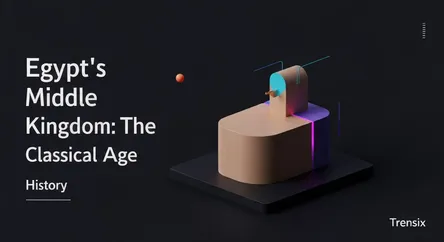History
Egypt's Middle Kingdom: The Classical Age

Discover the Middle Kingdom of Egypt, a golden age of reunification, cultural flourishing, and artistic innovation that shaped a new era for pharaohs.
What is it?
The Middle Kingdom of Egypt, often called the "Period of Reunification" or its "Classical Age," is a period in ancient Egyptian history spanning from approximately 2040 to 1782 BCE. This era, encompassing the 11th and 12th Dynasties, began when Mentuhotep II reunified Upper and Lower Egypt, ending a period of division. It was a time of restored stability and prosperity, which led to a remarkable resurgence in art, architecture, and literature. The pharaohs of this period shifted the capital from Thebes to Itj-tawy and focused on strengthening the central government, expanding trade, and fortifying Egypt's borders.
Why is it trending?
The Middle Kingdom is considered a golden age for Egyptian culture. It produced some of Egypt's most profound literature, such as "The Tale of Sinuhe," which explored complex human experiences. Art and sculpture became more realistic and expressive, with portrayals of pharaohs showing signs of age and the burdens of kingship, a departure from the idealized forms of the Old Kingdom. This period also saw a significant religious shift with the rise of the cult of Osiris, which democratized the concept of the afterlife, making it accessible to more than just the pharaoh.
How does it affect people?
The innovations of the Middle Kingdom had a lasting impact on Egyptian civilization. The establishment of a standing army by Amenemhat I created a more secure state and provided opportunities for social advancement based on merit rather than birth. Extensive irrigation projects, especially in the Faiyum region, increased agricultural output, supporting a larger population and strengthening the economy. For ordinary people, the growing prominence of the god Osiris offered a more personal and attainable vision of the afterlife. This period's cultural achievements set a standard that later generations of Egyptians would look back on as a model of excellence.